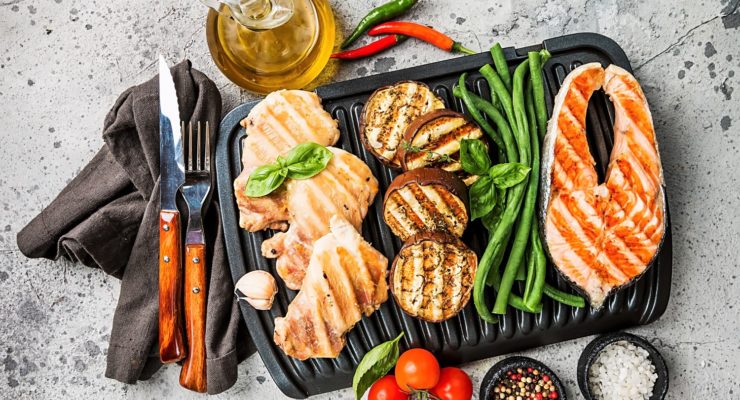How to Eat Healthy on a Low Budget
Article posted in: Lifestyle
Eating healthy doesn’t have to cost a fortune. By putting a few simple tips into practice, like focusing on whole foods instead of processed, packaged “health” foods, you can come out ahead of budget and enjoy healthy, whole food meals every day! Here are six ways to eat healthy on a low budget:
1. THINK BULK
There are two ways to approach this: Buying in larger quantities at your local warehouse store, and shopping the bulk bins at grocery stores. We’ll show you how to get the best out of both options.
Hit the warehouse store for your basic staples; this is a great way to save on whole grains like oatmeal, brown rice and quinoa; legumes and beans (canned or dry); nuts and seeds; dried spices; meat (store it frozen at home) and dried fruit—some of the best foods for weight loss. Have a solid meal plan before you shop so you’re sure to use up anything perishable before its’ time.
Browse the bulk bins in grocery stores when you need a smaller quantity of an item you don’t frequently use, like a special flour or a different spice. You’ll save money here by not having to buy the full size you’d normally find on the shelf, and since it’s something you don’t normally use, you’ll leave with only what you need—and nothing will go to waste.
2. SHOP AROUND
If you have certain items on your list every week, make a few pit stops at stores in your area to price out the name brand vs. store brand vs. the bulk section of a couple different places so you know where to get the best deals on the items you buy most. It’s a great way to save money on healthy food. That said, be smart about your meal planning and shopping so you don’t find yourself all the way across town for just one item.
3. GO COUPON CRAZY
Grab your scissors and Sunday paper and clip away to save money on healthy food. Grab the store paper from your local market to plan around their sale items each week, too. Don’t fall into the lure of items that normally aren’t on your list—simply stick to the tried-and-true basics here in order to really save. Now that you know what the best deals are that week, make your meal plan based around these foods before you head out to shop.
4. BEFRIEND YOUR FREEZER
Buy fresh fruits and veggies when they’re in season and on sale, then freeze to use throughout the months ahead. This tip works especially well with fruits like strawberries, blueberries, peaches, nectarines and cherries—just wash, chop and freeze. Or catch corn when it’s 10 for $1, buy a dozen or two, remove husks and silk, cut the kernels off and freeze in a zip-top freezer bag to add to soups, stir-frys, salsas and more. You can freeze broccoli and cauliflower florets, leafy greens like spinach or kale and squashes: wash and chop, blanch, cool and freeze.
Just keep in mind that frozen veggies, especially starchy veggies, are best used in cooked dishes rather than raw salads—and avoid freezing very high water content fruits and veggies like watermelon, oranges, lettuces, celery and cucumbers, as they don’t retain their pre-frozen state post-freezer.
5. AND BUY FROZEN
When you can’t find the fruits and veggies on your list on sale and in season, shop the freezer section. This can be a great option during winter when local fruits and veggies are limited. Pick up bags of frozen broccoli, green beans, peas and more. Save money and save yourself from fresh veggies going bad before they make it to the dinner table!
6. TRY MEAT-FREE MONDAY
Or any day of the week for that matter! Once a week build a meal around a whole grain, a protein-packed legume and a veggie or two. Not only is it a super-simple, super-fast way to meal plan, more importantly you’ll stash some cash by cutting out meat once or twice a week. Try black bean quinoa bowls with sautéed garlicky kale, and top with cilantro, salsa and low-fat Greek yogurt or cheddar cheese. The combination of a whole grain and bean or legume creates a complete protein source, and you can get creative with your toppings and the veggies you use based on what’s in season.
With a little creativity and a dash of deal-finding sensibility, you can enjoy healthy meals that don’t break the bank.






